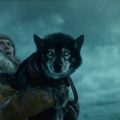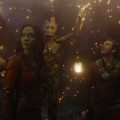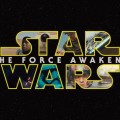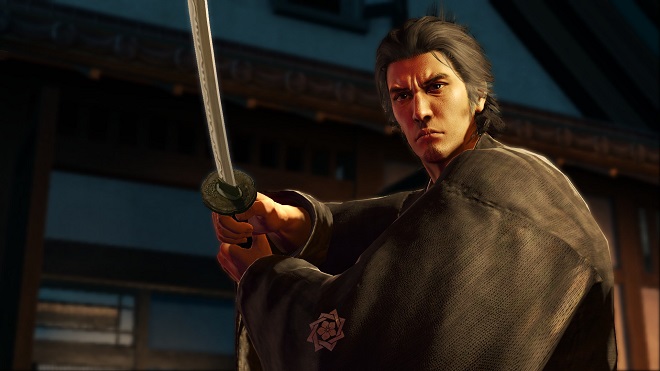Listed! The Complete Guide to Godzilla Monsters

Godzilla has become a worldwide cultural icon since first gracing the screen in the 1954 Japanese film Godzilla.
He even has his own star on the Hollywood Walk of Fame. The film led to the creation of a new Japanese genre of films featuring giant monsters, or kaiju. Godzilla also sparked 32 further Japanese films (produced by Toho), 3 Hollywood films (and one more to come in 2021), along with a plethora of novels, comic books, video games, TV shows, and even a hit single for Blue Oyster Cult.
“Ohhhhhh, no, there goes Tokyo. Go, go, Godzilla!”
Anyone?
Godzilla has been featured as both a protector of Earth and a destructive monster over the years, depending on the era of the film. Despite Godzilla’s ever-shifting role, one thing has remained consistent throughout almost all of the films: Godzilla must battle some invading monster(s) that is hell-bent on destroying humanity. And against all the odds, he almost always manages to come out on top. While Godzilla is the big dog of the group, the kaiju genre led to the creation of numerous other giant monsters that served as both friends and foes to Godzilla over the years. Fan favorites like Rodan, King Ghidorah, and Mothra were featured in multiple films throughout multiple eras, while many others were seen only once. Whether the main staple or a one-off performance, the kaiju genre sparked the creation of a myriad of bizarre, and often silly, monsters.
This article is the complete guide to Godzilla monsters featured in the films. We’ve broken the list down into the various Godzilla film eras, including the three American films. Each of the Godzilla monsters will be discussed once under the era of films for which they first appeared.
Enjoy!
The Complete Guide to Godzilla Monsters
Showa Era
The Showa era of films spans from 1954 to 1975 and includes 15 Godzilla films.
While initially portrayed as a destructive monster created by radiation from the atomic bombs dropped in World War II, Godzilla quickly transformed into a protector of Earth. This era saw some of the silliest Godzilla movies and the introduction of some of Godzilla’s most-loved kaiju friends and foes.
Godzilla

Godzilla, from the 1954 movie Godzilla, A guide to Godzilla monsters, wouldn’t be complete without a feature of the main man himself.
Godzilla, or Gojira in Japanese, was created in the aftermath of World War II and served as a metaphor for nuclear weapons in the original film. Godzilla’s role shifted throughout the years. As more films were made, Godzilla became a hero of sorts, defending humanity from threats from monsters and alien civilizations looking to take over the world. By the end of the Cold War, Godzilla’s role had reverted to the destructive force depicted in the original films. Except for the 1998 Godzilla, American film portrayals of Godzilla have again shifted toward a protector of Earth, albeit as more of an antihero.
While Godzilla’s appearance has shifted throughout the years along with his personality, the overall appearance and features remain the same (let’s just pretend the 1998 Godzilla doesn’t exist, shall we). He is portrayed as a muscular dark green/grey/black Tyrannosaurus-like creature with dorsal plates.
Another unique Godzilla trait, his iconic roar, has also been largely consistent, albeit with some variation. Even with minor variation, the roar is unmistakably Godzilla.
Godzilla’s signature weapon, his atomic breath, has also been consistent throughout the eras. A further link to nuclear weapons, the atomic breath is generated from inside his body and shot from his mouth in a blue or red radioactive beam.
Godzilla also feeds on nuclear energy, which is the main motivator for many of his destructive rampages. When not feeding on radiation or battling other monsters, Godzilla resides in the Pacific Ocean, presumably slumbering until next awakened.
Anguirus

Anguirus is a notable monster for many reasons. He is the first kaiju other than Godzilla to be seen in the film (other than the American original King Kong), appearing in the second film of the franchise called Godzilla Raids Again. He is also the first monster to battle Godzilla, setting up a reoccurring theme throughout the entirety of the franchise. While Anguirus is originally pitted against Godzilla, he quickly becomes an ally and is seen fighting alongside Godzilla in several subsequent films.
Anguirus is an irradiated dinosaur that looks similar to an ankylosaurus. It has horns on its head and a spike-covered shell on its back. Anguirus can move incredibly fast due to multiple brains, can burrow underground, and often attacks by jumping backward into its opponent to hit them with its spiked back.
Anguirus first appeared in the 1955 film Godzilla Raids Again and has been featured in a total of six Godzilla movies.
King Kong

Although not known primarily for his role in the Godzilla franchise, King Kong is a headlining monster and will be making another appearance in the upcoming American film Godzilla vs. Kong (2021).
King Kong vs. Godzilla (1962) was the third film in the Godzilla franchise and the first to feature the monsters in color.
Mothra

Mothra is a fan-favorite of the Godzilla monsters and is second only to Godzilla in film appearances with 15. She is also notable as the only confirmed female kaiju.
Mothra appears in two forms: as a giant caterpillar and as a giant moth. Unlike other Godzilla monsters, Mothra is almost always portrayed as a protective character, protecting her island, Japan, and Earth. She is often accompanied by twin fairies who speak on her behalf.
Mothra first appeared in the 1961 film Mothra and made her Godzilla debut in 1964’s Mothra vs. Godzilla.
Rodan

Rodan is another fan-favorite that was featured in his own film, the 1956 movie Rodan. Rodan later went on to be featured in 11 other movies, including 10 Godzilla movies. Rodan is typically featured as an ally to Godzilla but has also been a foe. He is an irradiated Pteranodon who can produce shockwaves when flying and powerful winds by flapping his wings. He was initially named Radon, a contraction of Pteranodon, but had his name changed to Rodan for English-speaking markets so as not to be confused with the element radon.
Rodan made his Godzilla debut in the 1964 film Ghidorah, the Three-Headed Monster.
King Ghidorah (Monster Zero)

King Ghidorah, also known as Monster Zero, is known for being one of Godzilla’s most prominent foes and appears in nine Godzilla films. Ghidorah is said to be inspired by the ancient Japanese dragon Yamata no Orochi. He is a three-headed, golden flying dragon kaiju that can shoot “gravity beams” that look like lightning bolts from its mouths. He also has two tails and no arms. Ghidorah has several origin stories. In one version, he is an extraterrestrial planet-killing dragon. In another, he’s a genetically engineered monster from the future, and in yet another, he’s a guardian monster of ancient Japan.
King Ghidorah first appeared in the 1964 film Ghidorah, the Three-Headed Monster.
Ebirah

Ebirah is a giant lobster kaiju that appears as an antagonist in three Godzilla films.
Ebirah first appeared in the 1966 film Ebirah, Horror of the Deep.
Kamacuras

Kamacuras (derived from the Japanese word for mantis “kamakiri”) is a giant mantis mutated as a result of a radioactive accident. Kamacuras makes relatively brief appearances in a few Godzilla movies, primarily as the monsters who tried to eat baby Godzilla. They live on Monster Island in the Showa era and are one of the alien-controlled monsters in the Millennium era.
Kamacuras first appeared in Son of Godzilla in 1967.
Minilla (son of Godzilla)

Minilla is the adopted son of Godzilla, who saved him from the Kamacuras after his egg was cracked open by them.
Minilla appears in a total of four Godzilla movies, the first being Son of Godzilla in 1967.
Kumonga

Kumonga is a giant spider kaiju that has served as both friend and foe to Godzilla. His main weapons include the ability to shoot a spider web and use a poison stinger. Some versions also show him with incredible leaping ability.
Kumonga first appeared in Son of Godzilla in 1967 and also appeared in four other Godzilla films.
Manda

Although not one of the most memorable Godzilla monsters, Manda appeared in a minor role in several Godzilla films as well as one non-Godzilla sci-fi film. Manda is based on a Japanese dragon and is a sea-dwelling serpent kaiju that can also live on land. He is one of the monsters living on Monsterland (an island monsters live on in many films).
Manda first appeared in the 1963 film Atragon and made his Godzilla debut in 1968’s Destroy All Monsters.
Gorosaurus

Gorosaurus is a dinosaur kaiju based on an Allosaurus. Like many other Godzilla monsters in this list, Gorosaurus has appeared in multiple films as both friend and foe. While Gorosaurus doesn’t have any special powers, he can perform a leaping kick when attacking. This maneuver, along with his strength, greatly help in the defeat of King Ghidorah in the giant monster battle in Destroy All Monsters.
Gorosaurus first appeared as an antagonist in the 1967 film King Kong Escapes, and later as a friend in three Godzilla movies.
Baragon

Baragon is yet another monster appearing in multiple films throughout the eras. He is a dinosaur-like kaiju with large ears and a face resembling a bat. He is said to have burrowed underground to avoid the dinosaur extinction and to have adapted. Baragon is one of three guardian monsters who battle Godzilla to save the Earth in Godzilla, Mothra, and King Ghidorah: Giant Monsters All-Out Attack in 2001.
Baragon first appeared in Frankenstein Conquers the World in 1965 and later in five other films, including Pacific Rim Uprising.
Varan

Varan is another monster that appeared in both Godzilla films and other sci-fi films. He is based on a Draco lizard, Godzilla, and a kappa (demon found in Japanese folklore). The only special ability Varan has is the ability to glide at high speeds. He also has protective spikes on his back and tail.
Varan first appeared in Varan the Unvelievable in 1958, as well as two Godzilla films.
Gabara

Gabara only appeared in one Godzilla film as an irradiated toad in the dreams of the main character. He also resembles the Oni in Japanese folklore.
Gabara first appeared in 1969’s All Monsters Attack and well as two non-Godzilla films.
Maneater

Maneater is a flesh-eating plant that is a minor character in the film All Monsters Attack. This is also the only film in which it is featured.
Maneater has the body shape of a person but is made of leaves, which lets it blend in with the jungle on Monster Island.
Hedorah

Hedorah is a notable monster because, like Godzilla, he is representative of a world problem. Hedorah is derived from the Japanese word for sludge and was representative of the growing pollution facing Japan and the world. He wreaks havoc on Japan, killing people, destroying buildings, and feeding on toxic waste and gas emissions before eventually being killed by Godzilla.
He first appears in Godzilla vs. Hedorah in 1971 and again in Godzilla: Final Wars in 2004.
Gigan

Gigan is another notorious Godzilla enemy known for being particularly violent in his actions, although he only appeared in three films. Gigan is a space cyborg monster that can fly, has large metal hooks for hands, and a buzzsaw on his front.
Gigan first appeared in Godzilla vs. Gigan in 1972.
Jet Jaguar

Jet Jaguar is not really a monster, but rather a mecha (or giant machine), that helps Godzilla defeat invading monsters and protect Earth. Jet Jaguar only appeared in one film but is notable because he is the result of a contest held by Toho for fans to come up with a new hero to be used in their movies. The contest-winning robot was called Red Alone but was renamed Jet Jaguar and originally slated to star in its own film. However, producers didn’t think Jet Jaguar alone would be enough and instead made him a sidekick to Godzilla.
Jet Jaguar was featured in Godzilla vs. Megalon in 1973.
Megalon

Godzilla vs. Megalon (1973) was also the only film in which Megalon appeared. Megalon is a giant burrowing insect that looks most like a beetle. He has spinning drill-like appendages for arms, can shoot firebombs from its mouth, as well as produce lightning from its horn. Megalon can also fly.
He, along with Gigan, are the antagonists of the film.
Mechagodzilla

Perhaps the most notorious mecha of the kaiju genre, Mechagodzilla is an alien or human-made Godzilla-like robot used to try and defeat Godzilla in several films. Although Mechagodzilla has appeared in a few different versions, he’s always well-armed and employs a vast range of weaponry. He can shoot missiles from his hands, knees, and feet, as well as beams from his eyes and chest. He can also fly and create a force field around himself. Later versions of Mechagodzilla also introduce a weapon called the Absolute Zero cannon, which shoots out of his chest and flash-freezes enemies.
Mechagodzilla first appeared in the 1974 film Godzilla vs. Mechagodzilla as well as in seven other films, including Ready Player One.
King Caesar

King Caesar is a lion-like kaiju that first teams up with Godzilla to defeat Mechagodzilla and the alien invaders who control it in Godzilla vs. Mechagodzilla (1974). He is a guardian based on Shisa, which are stone lion statues found commonly in Okinawa. King Caesar possesses speed, agility, and strength. He can also absorb the energy attacks of enemies and shoot them back through his eyes.
King Caesar first appeared in Godzilla vs. Mechagodzilla and later in two other Godzilla films.
Titanosaurus

The last monster of the Showa era, Titanosaurus is a dinosaur kaiju resembling a Spinosaurus. Although there is an actual dinosaur named Titanosaurus, they have little else in common. Titanosaurus is a secondary villain next to a redesigned Mechagodzilla. He is controlled by aliens and a mad scientist who wants revenge on humankind. Titanosaurus can use his tail as a fan, create whirlpools, and holds his own with Godzilla in hand-to-hand combat.
He appeared in 1975’s Terror of Mechagodzilla and Godzilla: Final Wars (2004).
Heisei Era
Following Terror of Mechagodzilla (1975), the franchise took almost a 10-year break. The resumption of the franchise and the following seven films would be known as the Heisei era.
The Heisei era spans 1984’s The Return of Godzilla (meant to be a direct sequel to the 1954 film) to 1995’s Godzilla vs. King Ghidorah. The Heisei era films are set in a single timeline, with each having continuity with the others.
The Haisei Era also gave rise to new, and scarier, Godzilla monsters.
Shockirus
Shockirus is not a monster who’ll do much damage to other kaiju’s, but it does do a fair amount of damage to humans. Akin to a kaiju pest, Shockirus is a giant crap or louse-like creature that jumps off Godzilla and onto a boat. It kills several humans on the boat before being killed itself.
Shockirus makes its only appearance in The Return of Godzilla (1984).
Biollante
Biollante is the result of another Toho fan contest, albeit a much more terrifying one. It is an engineered clone of Godzilla with the genes of a rose and a human thrown in and was meant as a symbol of the controversy of genetic engineering that characterized that period.
Biollante first appeared in Godzilla vs. Biollante (1989) and made a cameo appearance in Godzilla vs. SpaceGodzilla (1994).
Dorat
The Dorats are briefly shown in one Heisei era film but play a much more significant role in the background. The Dorat’s are genetically engineered futuristic pets, with source material coming from the corpse of King Ghidorah. In Godzilla vs. King Ghidorah (1991), the three Dorats are left on Lagos Island to be later exposed to radiation from nuclear testing in the Pacific.
The testing combined and mutated the Dorats into King Ghidorah.
Godzillasaurus
Godzillasaurus provides another origin story in the Heisei era. Godzillasaurus is a dinosaur living on Lagos Island that is later irradiated by nuclear testing, turning it into Godzilla.
Godzillasaurus appears in the 1991 film Godzilla vs. King Ghidorah.
Mecha-King Ghidorah
In the film Godzilla vs. King Ghidorah (1991), Godzilla can defeat and badly wound King Ghidorah before rampaging around Japan. Japan then asks a futuristic people if they can revive Ghidorah in the future and bring him back to stop Godzilla. Ghidorah is revived and made into a cyborg, becoming Mecha-King Ghidorah.
Mecha-King Ghidorah had the added ability to use grappling cables to attach itself to enemies and electrify them.
Battra

Battra is good and bad. On the one hand, Battra is a guardian of Earth who seeks to protect it. On the other, he sees humans as a threat to Earth and therefore tries to destroy them. In his only appearance in Godzilla vs. Mothra (1992), Battra is originally an enemy to both Mothra and Godzilla, and battles both. However, Battra has a change of heart and eventually teams up with Mothra to defeat Godzilla and save Earth.
Battra is seen in both a larval stage and a moth stage. He is black and red, with red eyes and horns. Battra can fly at great speed, shoot energy pulses from his horn, as well as use a stinger-like appendage on his tail.
Godzilla Junior

Known as Godzilla Junior, Baby Godzilla, or Little Godzilla, depending on the film, Junior is another Godzilla monster adopted by Godzilla. He is thought to be the offspring of a Godzillasaurus and is found by humans in a Rodan nest. Godzilla Junior is initially raised with humans but eventually ends up with Godzilla. Throughout the three films he’s featured in, we see Godzilla Junior grow from the height of a human to another fully formed Godzilla, although he is much friendlier toward humans than his father.
Godzilla Junior first appeared in the 1993 film Godzilla vs. Mechagodzilla II.
Fairy Mothra

Fairy Mothra is a small divine moth spawned by Mothra in space and sent to Earth to warn the people of the arrival of SpaceGodzilla.
Fairy Mothra appears in Godzilla vs. SpaceGodzilla (1994) as well as the Rebirth of Mothra Trilogy, which did not include Godzilla.
SpaceGodzilla

SpaceGodzilla only made one film appearance, but it’s a notable monster. Although the origins are unclear, it’s been theorized that SpaceGodzilla was formed after Godzilla cells were carried into space by another monster and irradiated through exposure to a black hole.
SpaceGodzilla is also one of Godzilla’s most formidable foes, perhaps because he is a Godzilla clone of sorts. He can fly, shoot a beam from his mouth, as well as bolts of energy through his shoulder crystals. SpaceGodzilla can also powerup by being near crystals he creates, can create a shield, and has regenerative powers.
SpaceGodzilla made his only film appearance in Godzilla vs. SpaceGodzilla (1994).
M.O.G.U.E.R.A.

M.O.G.U.E.R.A. (which stands for Mobile Operations G-Force Universal Expert Robot: Aero-Type) is another mecha featured in many kaiju movies, including Godzilla vs. SpaceGodzilla (1994). Like other mecha, he has an extensive array of weapons, the most-used of which are plasma cannons in its eyes. Other weapons include a plasma maser cannon in its chest, a drill bit, grenade missiles, and the ability to fly.
M.O.G.U.E.R.A. first appeared in The Mysterians (1957).
Destoroyah

Although it only appeared in one film, Destroyah has been labeled one of the most malevolent of the Godzilla monsters because it seemed to enjoy the destruction it caused. Destroyah even seems like it’s laughing in some of the fight scenes with Godzilla and Godzilla Junior. It is also one of the scariest monsters. Destroyah develops through several forms throughout the film, finally reaching its most developed and powerful form at the end of the movie. It evolved from a colony of microscopic crustaceans that mutated when the Oxygen Destroyer used to kill the first Godzilla was detonated.
Destroyah can fly, has a laser horn, and can produce micro-oxygen beams. He was featured only once in Godzilla vs. Destroyah (1995).
Millennium Era
The Millennium era of Godzilla films spans from 1999 to 2004 and includes six films. Unlike the preceding era, the films of the Millennium era are not continuous with one another. This era also saw the development of some strange new Godzilla monsters.
Millennian

The Millennians are an alien species that intend to establish themselves on Earth. They seek to gather as much information as possible about technology and biology through telepathy. Unlike other kaiju, they are reluctant to fight.
Millennian appears in Godzilla 2000: Millennium (1999).
Orga

After absorbing Godzilla’s DNA, the Millennians mutate and combine to form Orga.
Orga is also reluctant to fight Godzilla and instead tries to mostly avoid him, only getting closer to continue absorbing Godzilla’s DNA. Aside from absorbing DNA, Orga can regenerate, jump very high or far, and detach its lower jaw to make its mouth larger.
Orga only appeared in Godzilla 2000: Millennium (1999).
Megaguirus

Megaguirus is a mutated form of Meganulon, which appeared as early as the 1956 film Rodan. Megaguirus is formed after a swarm of Meganulon absorb energy from Godzilla and then transfer that energy to Megaguirus, who is considered a queen of the species.
Megaguirus can fly at incredible speeds, create shock waves with its wings, and stab opponents with a stinger at the end of its tail. This stinger can also absorb energy from its opponent.
Megaguirus appears in Godzilla vs. Megaguirus (2000), and Godzilla: Final Wars (2004) but the Meganulon also appear in Rodan (1957).
Kamoebas
Kamoebas makes a brief appearance in the film Godzilla: Tokyo S.O.S. (2003) after having been killed by Godzilla.
It is a turtle kaiju that first appeared in Space Amoeba (1970).
Monster X

The last new Godzilla monster of the Millennium era is Monster X, also called Keizer Ghidorah. He is a skeletal kaiju from space, although it is never made clear whether he was made or discovered. He is brought to Earth under the mind control of aliens attempting to take over. Monster X has several weapons at his disposal. He can shoot electric beams from his eyes, beams from his mouth, and drain energy from opponents through his bite.
Monster X appeared in the 2004 film Godzilla: Final Wars.
American Films
The last major set of films to feature Godzilla monsters are American films.
For the purposes of this article, we’ll be focusing on the Legendary films being the only other monsters featured in the 1998 Godzilla was baby Godzilla.
Furthermore, the majority of these new monsters were only briefly featured, with the exception being the MUTOs. However, with another upcoming Legendary Godzilla film, it remains to be seen whether these and other monsters mentioned but not displayed on film, will take more of a prominent role.
Aside from the creation of new monsters, the Legendary films are also notable for breaking from the label of kaiju, instead of deeming the Godzilla monsters Titans.
MUTO

MUTOs, which stands for Massive Unidentified Terrestrial Organism, served as the main antagonists in Godzilla (2014) and played a minor role in Godzilla: King of the Monsters (2019).
The MUTOs are parasitic insect-like Titans that are focused on consuming radiation and reproducing. They prove themselves formidable adversaries against Godzilla, especially when teamed up. They also show protectiveness toward each other and their nest.
Methuselah

Methuselah made a brief appearance in Godzilla: King of the Monsters (2019). It is an animal-plant-rock hybrid Titan with a forest growing on its back and large horns on either side of its head.
While the significance of its name is not entirely known, Methuselah refers to a figure in the Bible who lived an incredibly long time.
Scylla

Scylla is a cephalopod Titan (like an octopus or squid) with six legs ending in claws with spikes. The name refers to a female sea monster in Greek mythology.
Scylla makes a brief appearance in Godzilla: King of the Monsters (2019).
Behemoth

Behemoth is the last new monster featured in Godzilla: King of the Monsters (2019). It resembles a woolly mammoth or prehistoric sloth and has large tusks, claws, and spines down its back.
Final Thoughts
With 35 film appearances and at least one more to come, Godzilla is easily one of the most recognized and beloved characters of cinema. Godzilla enjoys a cult following and the franchise consistently makes money. But Godzilla wouldn’t be nearly so famous without the massive list of Godzilla monsters who accompanied him on the silver screen as friends, foes, and sometimes, both. Some starred in their films while others made only one appearance. Many even made the final cut through multiple eras.
Now that you have the complete guide to Godzilla monsters, which kaiju is your favorite?
This post originally appeared on Your Money Geek.
Related posts:
About The Author
DC Guest
Our guest account. See the space above to learn more about our guest writers.











